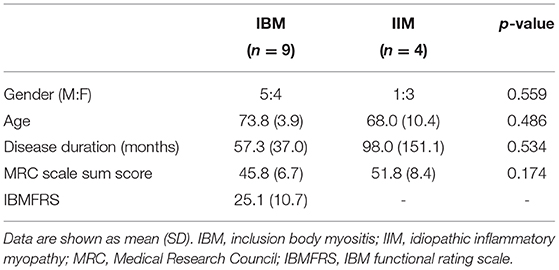Inclusion Body Myositis, commonly abbreviated as IBM, is a rare and progressive muscle disorder that primarily affects adults. This condition leads to the gradual weakening of muscles, making everyday tasks increasingly difficult over time. While there is no known cure for this disease, understanding its symptoms, diagnosis process, and available care options can significantly improve the quality of life for those affected. In this comprehensive guide, we will explore all aspects of this condition, from early signs to long-term management strategies.

Understanding the Condition
Inclusion Body Myositis is classified as an inflammatory myopathy, meaning it involves inflammation of the muscles. Unlike other forms of myositis, this condition is unique due to its slow progression and specific pattern of muscle involvement. It predominantly affects individuals over the age of 50, with men being more commonly diagnosed than women. The exact cause remains unknown, but researchers believe it may result from a combination of genetic predisposition and environmental factors.
How Does It Develop?
The development of this muscle disorder is linked to two primary processes: inflammation and degeneration. Inflammation occurs when immune cells mistakenly attack healthy muscle tissue, leading to swelling and damage. Degeneration refers to the abnormal accumulation of protein deposits within muscle fibers, which disrupts their normal function. Over time, these processes lead to muscle weakness and atrophy.
Symptoms to Watch For
Recognizing the symptoms early can help in seeking timely medical intervention. While the progression of the condition varies from person to person, certain signs are commonly observed.
Muscle Weakness
- Hand and Finger Muscles: One of the earliest and most noticeable symptoms is difficulty gripping objects. Patients often struggle with tasks like buttoning shirts, holding utensils, or turning keys.
- Leg Muscles: Weakness in the quadriceps (front thigh muscles) is another hallmark symptom. This can lead to frequent falls, trouble climbing stairs, or difficulty rising from a seated position.
- Swallowing Difficulties: Some individuals experience dysphagia, or difficulty swallowing, which can result in choking or aspiration pneumonia if not addressed promptly.
Other Signs
Besides muscle weakness, patients may also notice:
- Gradual loss of muscle mass in affected areas.
- Persistent fatigue, even after minimal physical activity.
- Cramping or discomfort in weakened muscles.
The Diagnostic Process
Diagnosing this condition can be challenging because its symptoms overlap with other muscle disorders. A thorough evaluation by a healthcare professional is essential for accurate identification.
Medical History and Physical Examination
The diagnostic journey typically begins with a detailed medical history and physical examination. Doctors will inquire about the onset and progression of symptoms, family history of muscle disorders, and any other health concerns. During the physical exam, they will assess muscle strength, reflexes, and coordination.
Laboratory Tests
Blood tests are often conducted to measure levels of creatine kinase, an enzyme released into the bloodstream when muscle tissue is damaged. Elevated levels may indicate muscle inflammation, although normal results do not rule out the condition.
Electromyography (EMG)
This test involves inserting small needles into the muscles to record electrical activity. Abnormal patterns detected during electromyography can provide valuable clues about muscle dysfunction.
Muscle Biopsy
A definitive diagnosis usually requires a muscle biopsy. During this procedure, a small sample of muscle tissue is removed and examined under a microscope. The presence of inflammatory cells and protein deposits within muscle fibers confirms the diagnosis.
Imaging Studies
Magnetic resonance imaging or ultrasound may be used to visualize muscle structure and identify areas of inflammation or atrophy.
Treatment Options
While there is currently no cure for this condition, various treatments aim to manage symptoms and improve quality of life.
Medications
- Immunosuppressive Drugs: These medications attempt to reduce inflammation by suppressing the immune system. However, their effectiveness varies, and they may not halt disease progression.
- Corticosteroids: Although commonly prescribed for inflammatory conditions, corticosteroids have shown limited success in treating this muscle disorder.
Physical Therapy
Regular physical therapy plays a crucial role in maintaining mobility and preventing further muscle deterioration. A tailored exercise program focusing on flexibility, strength, and balance can help patients stay active for longer periods.
Occupational Therapy
Occupational therapists assist patients in adapting to daily challenges caused by muscle weakness. They recommend assistive devices such as grab bars, walkers, or specialized utensils to enhance independence.
Speech and Swallowing Therapy
For those experiencing difficulty swallowing, speech therapists offer techniques to improve safety during meals and reduce the risk of complications like aspiration pneumonia.
Lifestyle Modifications
In addition to medical interventions, lifestyle changes can significantly impact overall well-being.
Nutrition
A balanced diet rich in protein, vitamins, and minerals supports muscle health. Patients with swallowing difficulties should consult a nutritionist to ensure adequate caloric intake through modified textures or liquid supplements.
Fall Prevention
Since leg muscle weakness increases the risk of falls, creating a safe home environment is vital. Simple modifications include installing handrails, removing tripping hazards, and using non-slip mats.
Mental Health Support
Living with a chronic illness can take a toll on mental health. Counseling, support groups, and mindfulness practices can help patients cope with emotional challenges and maintain a positive outlook.
Ongoing Research and Future Directions
Scientists are actively investigating potential treatments and therapies to address the root causes of this muscle disorder. Promising areas of research include:
- Targeted immunotherapies designed to modulate the immune response.
- Gene therapy aimed at correcting defective proteins responsible for muscle degeneration.
- Stem cell research exploring ways to regenerate damaged muscle tissue.
Participating in clinical trials offers patients access to cutting-edge treatments while contributing to advancements in understanding and managing this complex condition.
Support Networks and Resources
Connecting with others who share similar experiences can be incredibly empowering. Numerous organizations provide educational materials, advocacy opportunities, and community events for individuals and families affected by this condition.
Online Communities
Websites and social media platforms host forums where patients and caregivers exchange advice, share stories, and find encouragement.
Local Support Groups
In-person meetings allow participants to build meaningful relationships and gain practical insights from peers navigating the same journey.





